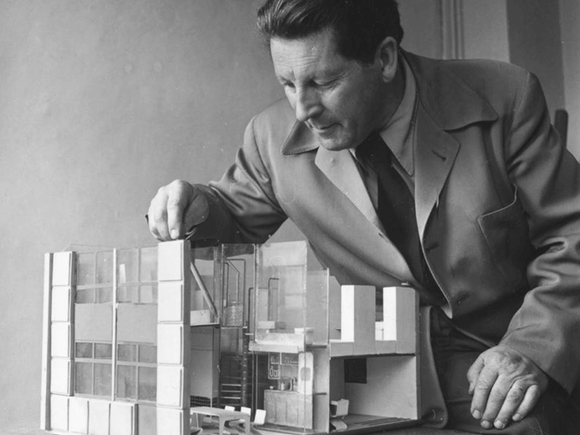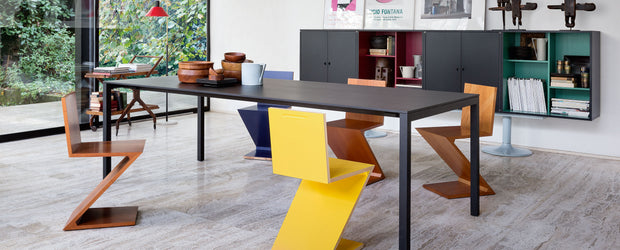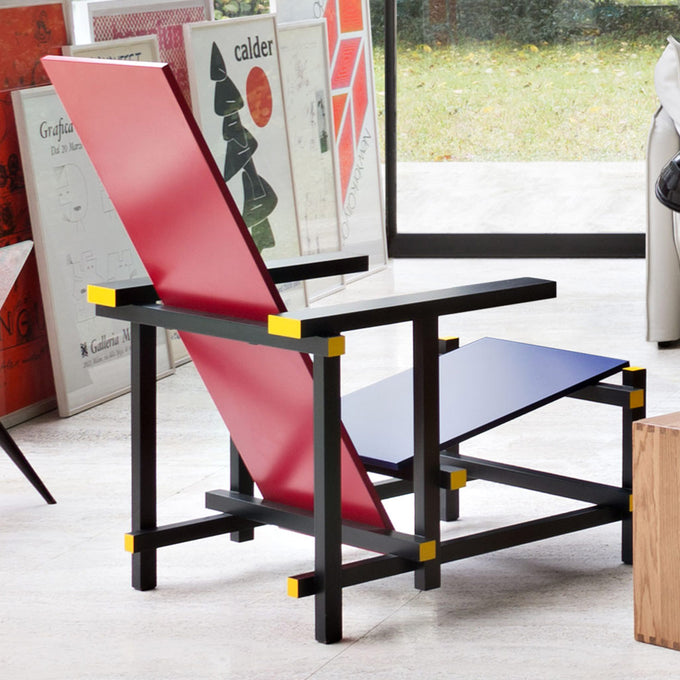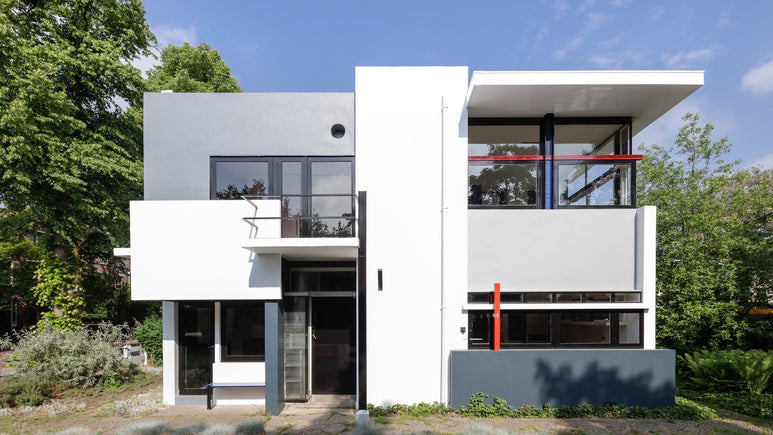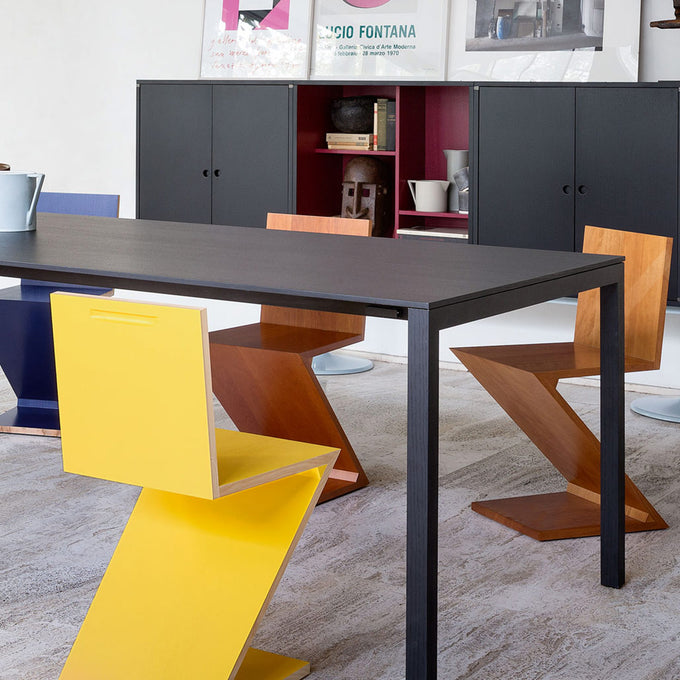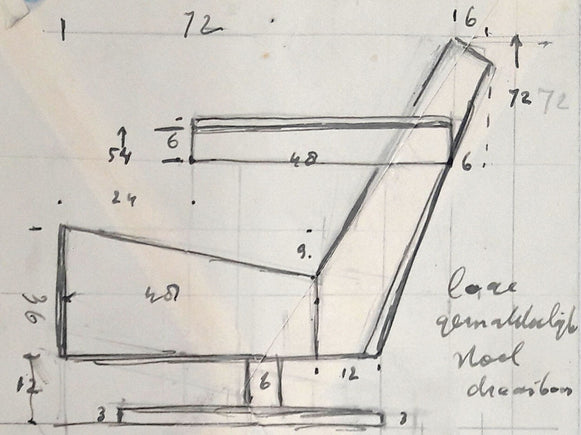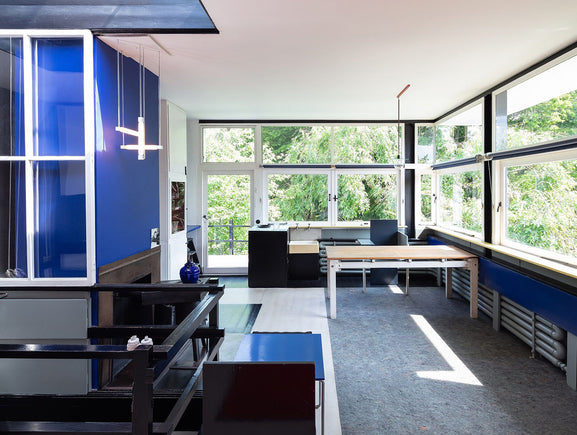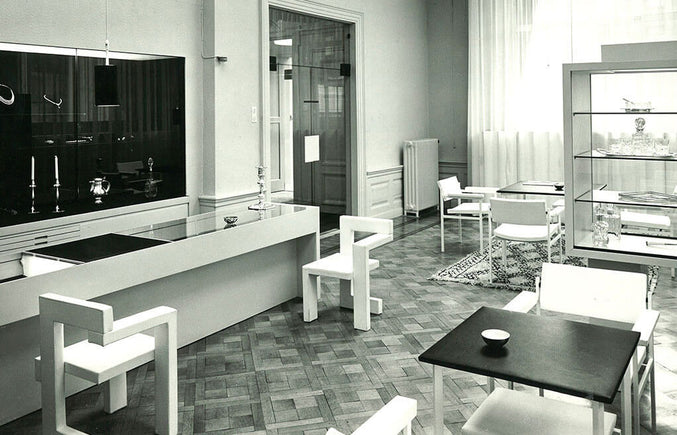In 1917, Rietveld opened his first furniture workshop on Adriaen van Ostadelaan in Utrecht. At that time, he further developed as an architect and, through Robert van 't Hoff came into contact with members of the De Stijl art movement such as Bart van der Leck, Theo van Doesburg and the architects J.J.P Oud and Jan Wils. Rietveld's 1919 slatted chair received great appreciation from De Stijl, under whose influence Rietveld painted the chair red and blue around 1923. Rietveld joined De Stijl and wrote regularly in their magazine.
Rietveld became part of the Dutch and later international avant-garde. Artist Charley Toorop, architect Bruno Taut, artists Kurt Schwitters, El Lissitzky, Vilmos Huszár and designer Mart Stam were among his friends.
Image:
Red and Blue Chair, 1923
